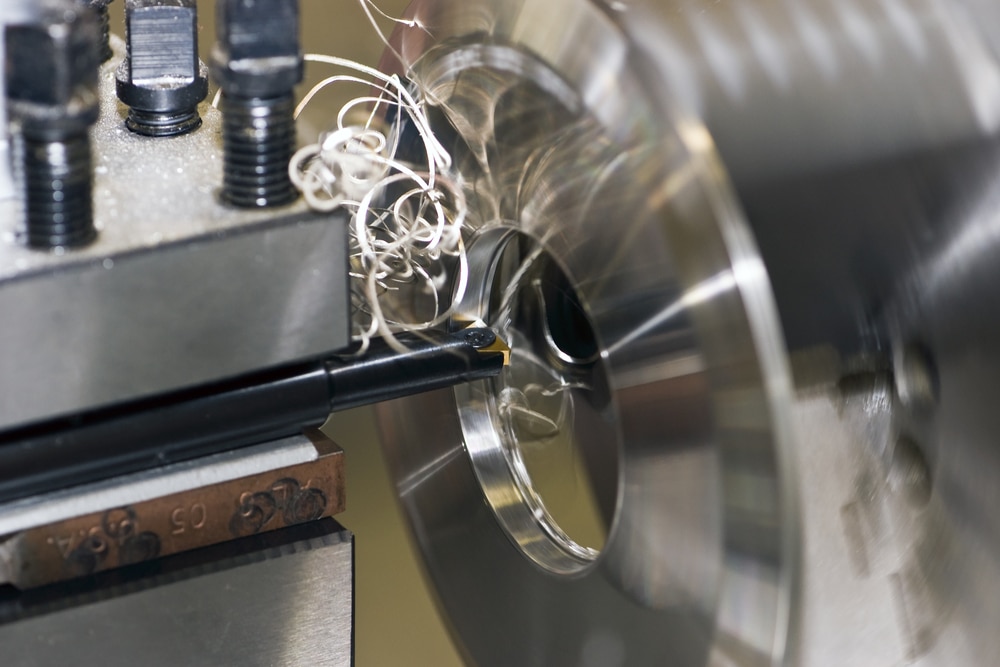Metal Spinning Thickness Tolerances by Application
A powerful and versatile technique for forming metal, metal spinning is a method of carving out the desired shape from a metal base not unlike that of wheel-thrown clay. The desired medium is spun at high velocity, and specialized heads trim away material until the preferred form is reached. Though commonly considered exclusive to prototyping and small artisan batches, metal spinning is an adaptable industrial production method.
Benefits of metal spinning include less machining required for the final product, greater resilience, and faster production. The process naturally encourages more rugged objects and can be used for artistic expression and robust functionality. The seamless designs waste significantly less material, and mechanical properties may be improved at a fraction of the cost and time of more traditional modalities of metal forming. Although the rotary nature of metal spinning preferentially favors circular shapes, technological advancement has significantly improved its potential applications.
How does tolerance vary by application?
Metal spinning tolerances vary across a host of factors but are generally about 1/32″. The type and thickness of the material used, relative tightness of desired angles, available equipment, and budget for the precision of design fidelity all play into the final production outcome.
Radius tolerance is typically twice the material thickness but may even match material thickness for circular shapes. Thinning of the base material is common to metal spun applications. Maximum tolerances are typically relative to the inside diameter, though radius tolerance of at least double material thickness will significantly facilitate ease of production.
Essentially, the lower the tolerance for variance, the greater the cost of time and care to achieve it. Defining exact dimensions and tolerance accelerates production and optimizes cost, and generally, starting thickness should be about 25% to 30% greater than the final thickness.
Metal Spinning Applications
Applications abound for metal spinning production. It is a modality of choice for small batch and prototyping and rotationally symmetrical applications. Tolerances required vary from one project to the next, but generally, metal spinning provides superior quality production in terms of strength and resilience. The spinning process improves strength by realigning the grain of the metal. Secondary machining may also be performed after spinning for precision on more complex designs. A few typical applications for metal spinning include:
- Stainless steel bowls
- Pots and pans
- Hollowware
- Gas cylinders
- Brass instruments
- Satellite dishes
- Lighting fixtures
- Architectural
- Air handling
Materials Used in Metal Spinning
Metal spinning performs well for a wide range of base materials. Cold forming is preferred for improved tensile strength and grain structure, with lower cost and time than forging or casting. Tooling is generally much less complicated, and parts are lighter weight. Some common materials used in metal spinning include:
- Galvanized steel
- Common Steel
- High Strength Steel
- Stainless Steel
- Nickel Based Alloys
- Copper and Brass
- Aluminum
- Titanium
Additional Design Considerations
The most common thickness of spun materials falls between 0.6 mm and 1.3 mm. Specialized facilities can spin metal from a minimum of about 0.1 mm to approximately 120 mm. Maximum thickness is limited only technically by the size of machining equipment and available power. In determining the suitability of a project for metal spinning, the metric of spinning ratio is an excellent parameter. This is a ratio of depth to diameter, with a rating of 100 indicating the ideal for spinning. As depth increases, the process becomes more complex and may require repetition. The conical shape is considered the easiest to work with, while hemispherical shapes are more difficult due to increasing angle sharpness between the chuck and metal, leading to greater strain on the material.
Additional Metal Spinning Considerations
A few additional considerations include the corner radius, taper, bottom flatness, and beading of the edge. Sharp corners are more likely to thin the base material and elicit greater strain on the material and the chuck.
Blended radii and filets are optimal at a preferred minimum of 3 mm to 6 mm. Similarly, the taper is an important consideration for removing the part from the chuck.
For cylindrical products, a minimum taper of at least 2° is desired, though steel chucks may produce a taper of only 1/4°. Metal spinning cannot improve the flatness of a flat-bottomed part, but a 5° cone angle improves rigidity and is easily spun.
Finally, some products are finished with a rolled bead on the edge, and an outward-facing bead is significantly more straightforward to produce than an inward-facing one. Metal spinning is fast and inexpensive, but consulting an engineer early in the design process will help streamline production significantly due to the many nuances of production.
Contact Tallmadge Spinning & Metal for all of your metal spinning needs!
Request a Quote to Get Started
From research and development to final production, Tallmadge Spinning & Metal is your partner for cost-effective and superior metal products. Request a quote today to get started.
REQUEST A QUOTE TODAY TO GET STARTED

